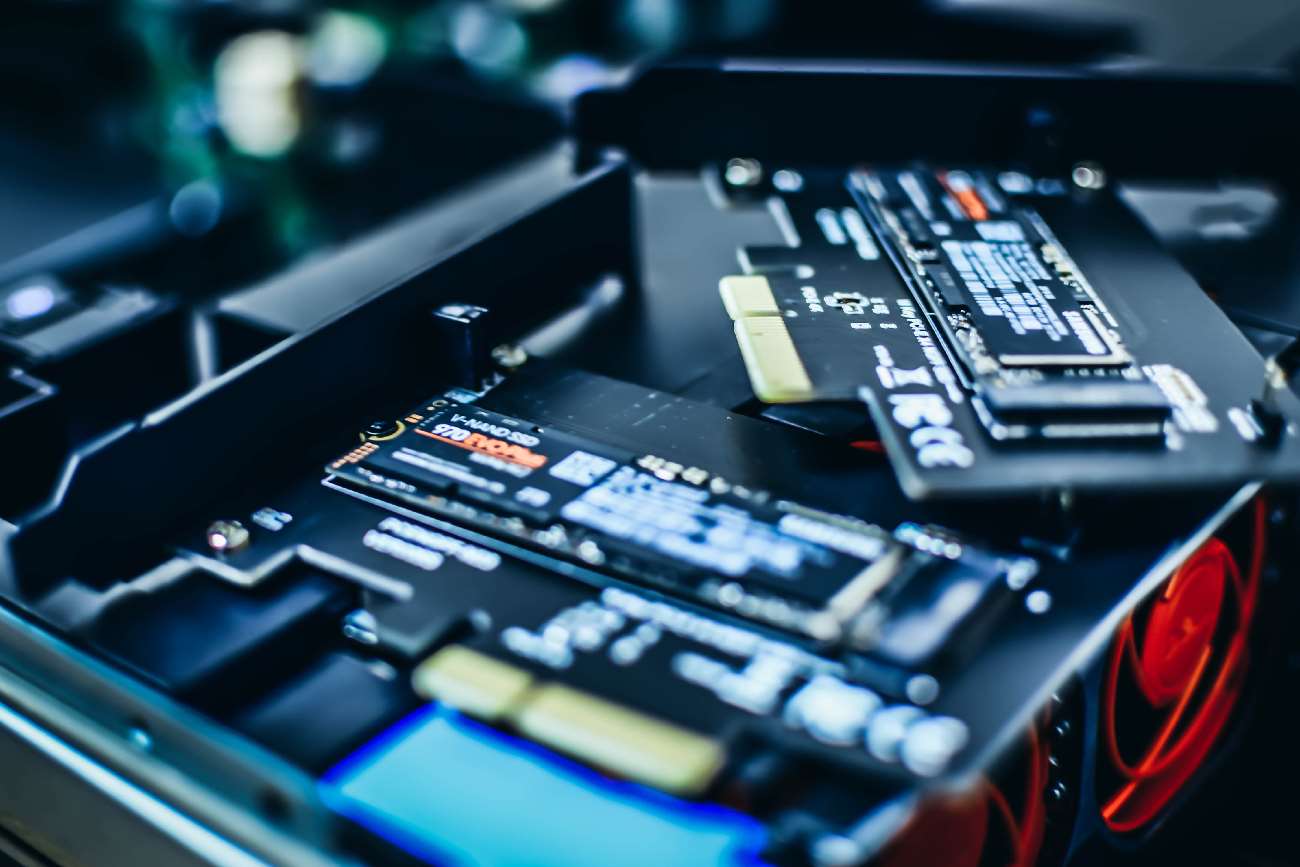Information has been called the currency of these modern times. In many forms and sizes, information has made and marred individuals, systems, organizations, etc. Therefore, it is no surprise that man has constantly sought better and more efficient ways to store the priceless commodities of data and information. From floppy disks and CD-ROMS to hard drives and solid state drives, we have devised various means of storing information.
What are SSDs? SSD vs. HDD vs. RAM
As you may have already surmised, SSD means Solid State Drive. These storage devices are so called because they have no moving parts, but to understand that, it is crucial that we talk about the predecessors of SSDs: the HDDs. HDD means Hard Disk Drive, and these drives store data on what are known as platters which are spinning magnetic disks. So, data and information are spread over these platters, and specific information is located in specific areas of the drive.
These platters have read/write heads for reading from or writing data to the platters on the drive. When one seeks to read specific information from the drive or write to it, these heads must align over the area that contains such information, which translates to a delay in action.
Solid State Drives, on the other hand, are predicated on NAND memory chips made up of transistors rather than moving parts such as the platters in HDDs. Consequently, read and write operations from and to SSDs are much faster than HDDs.
This difference between an SSD and RAM provides the basis for this article. Whereas RAM is dependent on an active power supply to retain its data, the SSD can retain a charge for long and use that charge to keep any data stored on it secure for an extended period. The data stored on RAM is immediately lost when it loses power supply and is therefore known as volatile memory. Still, the SSD is able to store data without an active power supply and is known as non-volatile memory.

How do SSDs store data without an active power supply?
Unlike HDDs, where the spinning magnetic disks are arranged in platters, the NAND memory chips in SSDs are made of silicon and stacked in grids/blocks and rows/pages of varying densities. It is to these sets of interconnected memory chips that SSDs read data from and write data. There are also entities known as channels which we may liken to conduits for data; SSDs have between four and eight channels, which contributes to their higher speed (HDDs have just one).
It was mentioned earlier that these chips are made of transistors. The specific transistors used in SSDs are called floating-gate transistors, abbreviated as FGT. Each FGT can hold a single bit of data and an electric charge, making it possible for solid state drives to keep stored data secure even without an active power supply. These transistors are designated either 1 or 0 depending on whether or not they carry a charge.
Since SSDs have no moving parts, every bit and block of stored data and information is accessible at constant speeds. It, therefore, eliminates the delay caused by the need for the alignment of the read/write heads in hard disk drives. Nevertheless, writing data to empty blocks is much faster than overwriting already existing data, even with its more sophisticated drive controllers.
Solid state drives use three types of memory cells: single-level, multi-level, and triple-level memory cells. Single-level cells can only hold one bit of data per cell, but what it lacks in capacity, it makes up for in speed and durability. They are therefore the fastest and least likely to develop internal damage and, consequently, the most expensive.
From single-level to multi-level and triple-level cells, the storage capacity increases while retrieval speed, durability, and cost reduce. Multi-level cells are able to hold two bits of data; each cell offers twice the storage space of single-level cells for the same physical space. Triple-level cells can each accommodate three bits of data per cell.
Types of SSDs
You will probably come across some terms relating to the types of SSDs. We will take a look here at some of those terms.
PCIe and NVMe SSD
PCIe (Peripheral Component Interconnect Express) is a connection type based on the NVMe (Nonvolatile Memory Express) standard that uses multiple parallel channels (conduits for data, remember?). It, therefore, offers high input-output per second (IOPS), low latency periods, and high bandwidth. It has found uses in systems where high-speed communication and high performance are required between storage devices and computer processors.
mSATA III, SATA III, and traditional SSDs
Most traditional SSDs are based on an older interface known as Serial Advanced Technology Attachment (SATA). It was designed primarily for storage rather than speed – SATA reaches speeds of 600 megabytes/second, whereas NVMes can achieve speeds of up to 4000 megabytes/second. Although NVMe is gradually replacing SATA, SATA-based SSDs are still a much better deal than HDDs.
How Often Do I Need to Power my SSD?
To be very clear, although solid-state drives do not need a constant active power supply to retain the data stored in them, they can lose that data if they do not get powered up or recharged periodically. As has been mentioned, the ability of SSDs to store data without an active power supply is predicated on its transistors being able to store a charge. It is this charge that is used up over time and needs to be replaced.
Some studies have shown that, depending on the make of the SSD, they can store data without power for any period between seven days and seven years. If you use your external drive often, that is, if you plug it into your system (Yes, this suffices to power your SSD), or if you put on your computer containing an internal SSD, often, there is little to worry about concerning the safety of the data stored on it.
For more long-term storage, however, it is important to confirm on the manufacturer’s website how long the particular type of SSD you have can store data securely without power. It would then be on you to not exceed that safe period, although it has been advised that, whatever the case, an SSD should not be left unattended for more than a year or two at the most.
One other factor that has a bearing on how long an SSD can store data without power is the temperature of storage and use. An SSD that spends long hours inside a car, for instance, is sure to develop problems quicker than another kept in lower and more optimal temperatures. SSDs that are stored at room temperature (about 25 degrees Celsius) and used at about 40 degrees Celsius can be expected to last at least two years. With every rise in temperature of storage and use, that safe period has been shown to reduce.
Conclusion
One thing we can probably always trust is our seemingly insatiable curiosity. That and the tools science provides for our curiosity to work with. Those ensure that we continually seek to make what we have better, to do what we do faster, more accurately, and in more secure situations. Solid state drives are probably only a pitstop in our quest for the very peak of technological advancement. Still, at the moment, they provide a really efficient way to not only store data but easily retrieve it for many other different operations.

